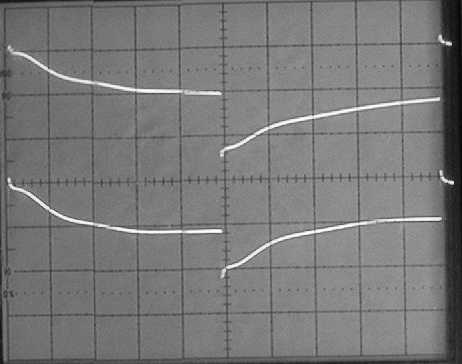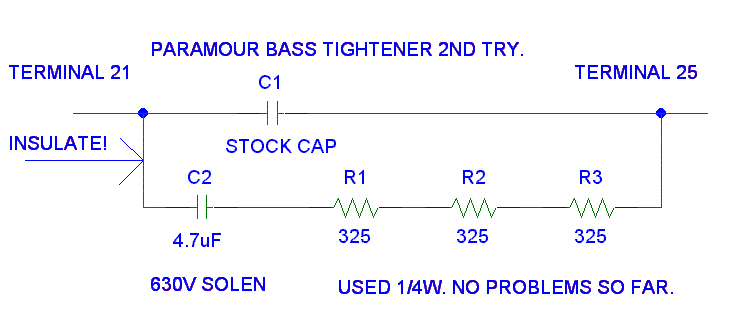
The damping capacitor needs to be the same or slightly larger than the parafeed capacitor. This series resistor will have to be tuned. The resistor changes the Q of the parafeed tank near resonance.
Starting points for the resistor tuning:
1. R = sqrt( L_parafeed in parallel with L_output_transformer
/ C_parafeed) (round up in value)
Note: C_parafeed = C1 shown below
2. R = 1/(2 * PI * F_-3db * C1)
This how Lossy Parafeed is installed:

The Paramour 2A3 grid coupling capacitor is 0.33 uF with 133 kiloohm to signal ground. These pictures were taken with the Sino 2A3s. All pictures are with the scope is at 5 msec/ div. The top trace is the plate of the 2A3 at 50V /div. The top of the screen is adjusted to be at 450V. The bottom trace is the output at 2V/ div.
Most of these images consist of two, usually three, separate images pasted together to make one complete picture. I must admit that I am not happy with these pictures. When I first implemented "lossy parafeed" in the Paramour, I has some really nasty looking waveforms that where calmed down with the "lossy parafeed." I can't seem to repeat what I was doing to make those nasty waveshapes. I had intended to increase the resistor in series with the 4.7 uF to show differences in the improvements you can get with "lossy parafeed," but because I can't get that nasty waveshape back, there is no point in the exercise.
These three pictures are with no load and with stock Paramour magnetics.
Stock Parafeed capacitor. (No load)
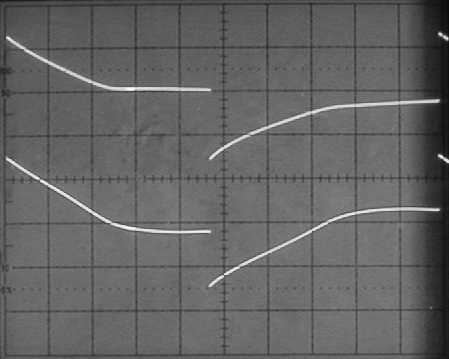
Below is the 8 ohm output of the Paramour with an additional 4.7 uF
capacitor across the existing parafeed capacitors. Notice that there
is a dip in the plate voltage before it flat lines and the sharp edge in
the output waveform. (No load)
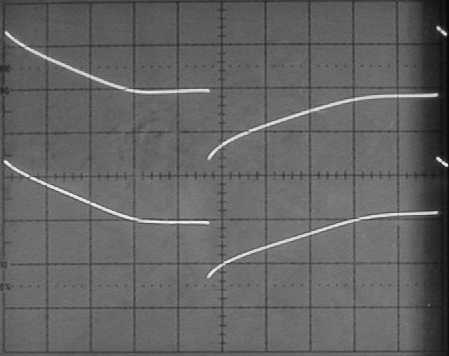
Below is the 8 ohm output of the Paramour with lossy Parafeed of 4.7
uF and 975 ohms. Notice that the plate waveform and the output wave form
look smoother as they reach "flat line." (No load)
Look at the waveform three grids in from the left to see what I am
talking about.

Now lets look at the same three pictures with a 8.45 ohm load on the 8 ohm output with stock magnetics.
Stock Parafeed capacitor. (8.45 ohm load)
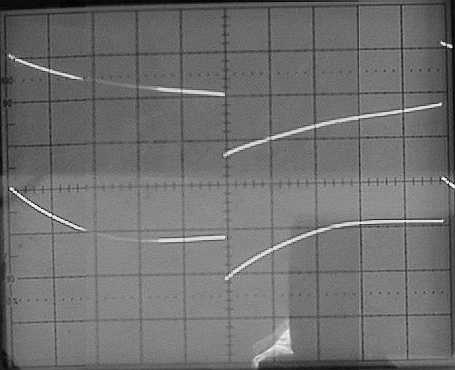
Below is the 8 ohm output of the Paramour with an additional 4.7 uF
capacitor across the existing parafeed capacitors. Notice that the
output (lower trace) does not undershoot (good). Notice that the
output has "more area under the curve" with nearly twice the Parafeed
capacitance as the stock Paramour (good). Notice that the plate is pulled
lower than with the stock capacitor. This means the plate is delivering
more current (bad and good.) (8.45 ohm load)
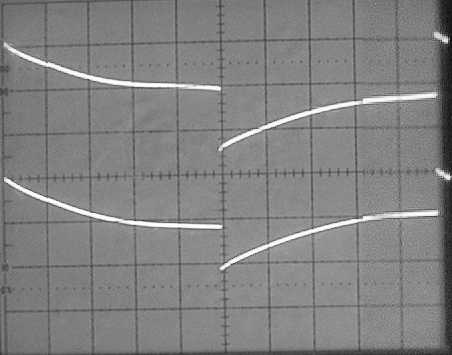
Below is the 8 ohm output of the Paramour with lossy Parafeed of 4.7
uF and 975 ohms. Notice that the plate waveform and the output wave form
look smoother (good.) Notice that the plate is slightly higher indicating
it is delivering less current for nearly the same output (good.) (8.45
ohm load)
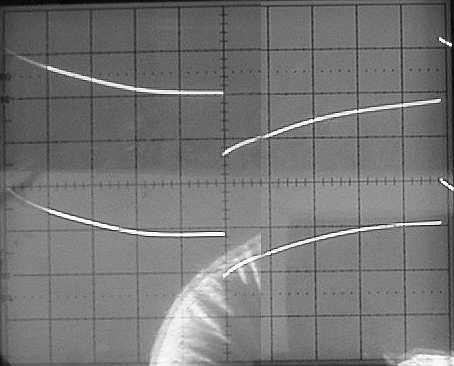
Now lets look at the same three pictures driving a Radio Shack Minimus-7 on the 8 ohm output with stock magnetics
Stock Parafeed capacitor. (Minimus-7 load)

Below is the 8 ohm output of the Paramour with an additional 4.7 uF
capacitor across the existing parafeed capacitors. Notice that the
output (lower trace) does not undershoot (good). The plate and output
shows a little more ringing (bad/possibly good.) Notice that the output
has "more area under the curve" with nearly twice the Parafeed capacitance
as the stock Paramour (good). Notice that the plate is pulled lower than
with the stock capacitor. This means the plate is delivering more current
(bad and good.) (Minimus-7 load)

Below is the 8 ohm output of the Paramour with lossy Parafeed of 4.7
uF and 975 ohms. Notice that the plate waveform and the output wave form
look a tiny bit smoother (good.) Notice that the plate is slightly higher
indicating it is delivering less current (good.) (Minimus-7 load)
